Saints and Blesseds
Tutti gli articoli
Tutti gli articoli
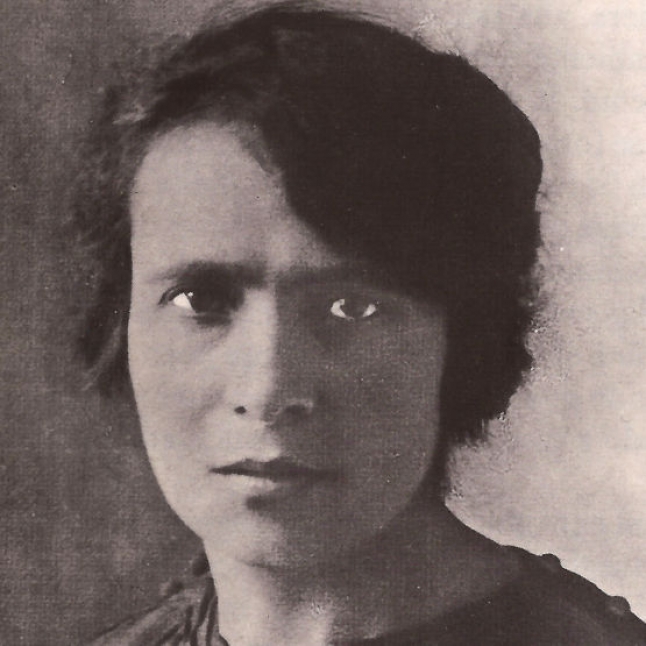
01 March 2016 Edvige Carboni
It is the spontaneity of the gesture of the talented, able, patient and steady embroiderer, that represents efficaciously the Edvige Carboni’s life; however, a life, not at all easy to be described; a noteworthy life, despite usual and linear; a life whose events, for us incredible, were for her completely normal, a life now under consideration of the Congregation for the causes of saints.
The proofs of events documented in her Diary, and certified by people who saw through their eyes and heard through their ears something that they will never forget, let us sometimes speechless. Edvige is the proof of how Kierkegaard affirmed about faith: “Faith is the greatest passion of every men”. But Edvige goes beyond: she incarnates exactly what the spiritual tradition of Church indicates as heart, in the biblical sense of «profundity of the being» («in visceribus»: Gen 31, 33), where person decides or not for God.
Edvige Carboni, born on 3rd 1880 in Pozzomaggiore in the province of Sassari, was the second of five among brothers and sisters. Her parents, Maria Domenica and Giovanni Battista, immediately understood that she was special. Her mother told that when her child was born, the room lighted up thanks to a monstrance and that the following day a cross appeared on the newborn’s chest, increasing visible forever. Another extraordinary event happened some days later, when a swarm of white bees came into the house, stopping momentarily on the little Edvige’s face making her no evil. These signs were the origin of an amazing life.

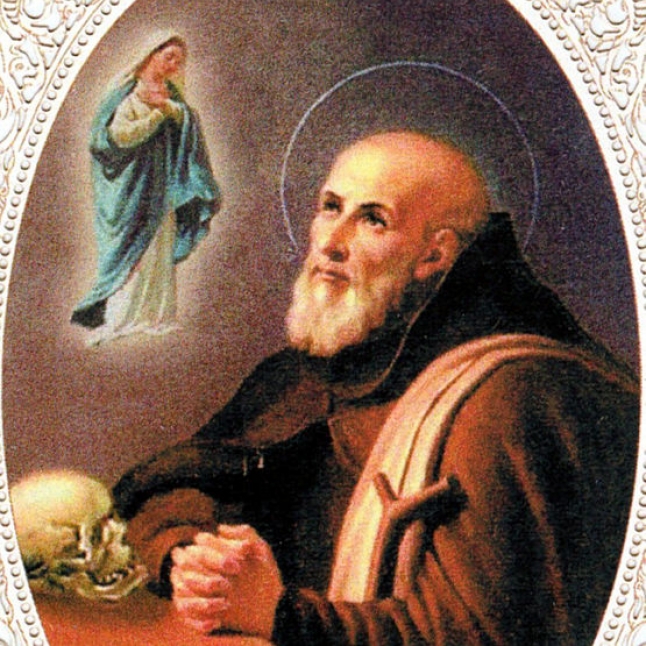
01 March 2016 Friar Ignazio from Laconi
Vincenzo Peis came from Laconi, where he lived abiding by the Christian values until 1721, the year when he began the Novitiate at the Convent of Capuchins, obtaining the name of Friar Ignazio.
He carried his apostolate out in Cagliari for about forty years, giving an evidence of his communicative and charismatic religious skill about the execution of his role as a collector of alms.
The request of offertory was addressed for satisfying the needs of the poorest and of the most indigent and his quality was that of making people be more participating to the close and private situation of the Convent.

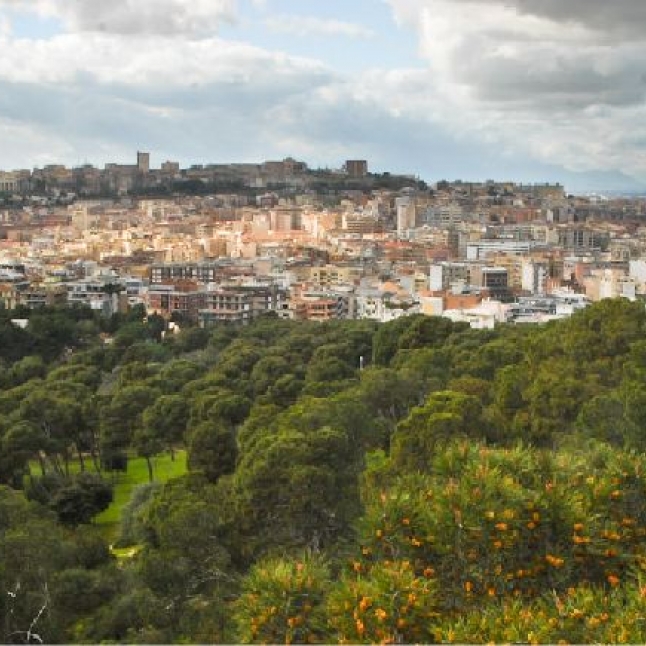
01 March 2016 Il colle dei santi in Sardegna
“Così mi apparve. Città di roccia Gerusalemme di Sardegna”. Questa fu la prima immagine di Cagliari che lo scrittore Elio Vittorini immortalò su carta. Come la città santa anche Cagliari si arrampica sulla pietra calcarea incastonata sulle zolle di terra dei suoi sette colli. Una di queste alture un luogo sacro. Buoncammino.
Ogni lembo di terra che dal mare del porto si arrampica veloce sul colle “Santo” parla della storia più antica della città.
Una storia talvolta trascurata, ignorata e dimenticata dai più. Ma questo luogo continua a parlare.
L’eco delle preghiere dei numerosi fedeli che accalcano quotidianamente il Convento di Sant’Antonio da Padova, noto ai più come Fra Ignazio, fuoriesce dalle bianche e disadorne pietre che compongono il tempio e si propagano per tutta l’isola. Il culto per gli uomini santi che vissero in quel luogo la regola dei frati francescani cappuccini minori è diffusissimo in tutta la Sardegna da tempi remoti.
I documenti ufficiali testimoniano la cerimonia dell’11 ottobre 1591 officiata dall’Arcivescovo Francesco del Vall, quando vi fu la posa della prima pietra in un terreno sul quale è probabile sorgesse un edificio sacro paleocristiano, secondo quella che era l’usanza del tempo di far sorgere le chiese laddove vi erano stati luoghi dedicati a culti pagani o luoghi di martirio per i primi cristiani.
Non a caso pare vi fosse un tempio pagano alle pendici dell’altura sopra l’anfiteatro romano che si trova dirimpetto alla chiesa.
Ma la presenza dei frati cappuccini minori risale ad alcuni decenni prima, quando di dodici uomini inviati da Papa Sisto V destinati a Sassari, quattro approdarono, si dice a causa di una tempesta, sul litorale cagliaritano. I primi frati furono acquartierati nel convento di san Francesco in Stampace, che ospitava a partire da qualche secolo addietro i frati francescani conventuali.
Questi riservarono per loro un’intera parte della struttura che comprendeva la cappella di San Giorgio. In questo luogo racchiuso oggi tra la via Angioy, il Corso Vittorio Emanuele II e via Mameli, di cui rimangono i ruderi a cielo aperto che a breve, per iniziativa privata vedranno loro restituita dignità, si svolsero le prime opere dei cappuccini in città.
Tra il popolo e l’ordine francescano si suggellò già dal tempo un forte legame.

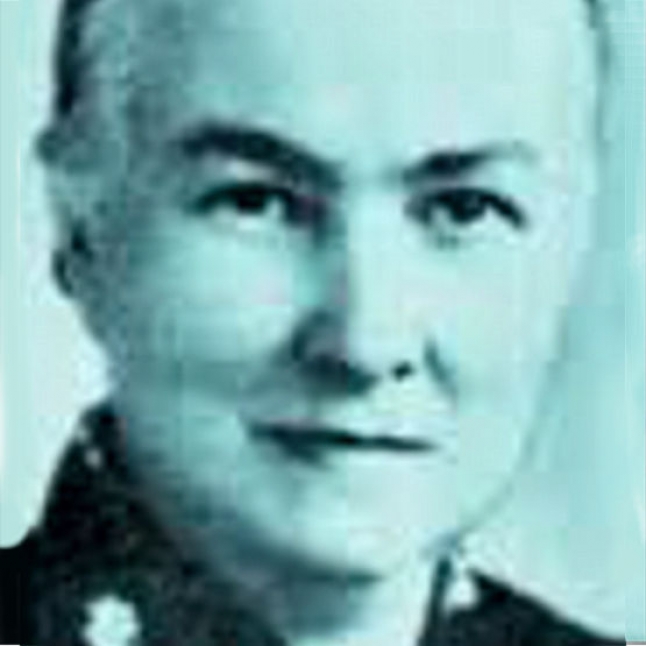
01 March 2016 Leontina Sotgiu
Leontina Sotgiu spent her human affair through the bravery and the dedication of a woman who did not stop fighting against the evil opposing her strenuously the good.
For understanding the numerous inexplicable events of her life, stayed with her Father Sanna of the convent of Saint Maria in Betlem of Sassari and Father Manzella.
So, the spiritual education received allowed her to face, thanks to bravery and dedication to the God’s will, the events that put to the test her physique and her mind.
Leontina Sotgiu was born in Sassari on 13th January 1882, in a copious family. Her father worked as a marshal of the Finance Police and her mother worked as a tailor.
Some years later, all her family proved the experience of the emigration to France, however without having fortune as they hoped.
Come back in Sardinia, Leontina, in the age of marriage, was asked to be married. She, a Franciscan tertiary and thought about a life dedicated to God, after having thought about it, refused the proposal, and that caused scandal and blame.
How, indeed, could Leontina allow a man to distract her from her passion, from the vocation that, since she was a child, made her say, as a protest against her grandmother, after having been unheeded by the priest during the First Communion, that when she will have grown up, she would have communicated not one, but two, three or maybe four times per day?
Such a personality and such a will would have been with difficulty removed from the project of life that was become definite for her.

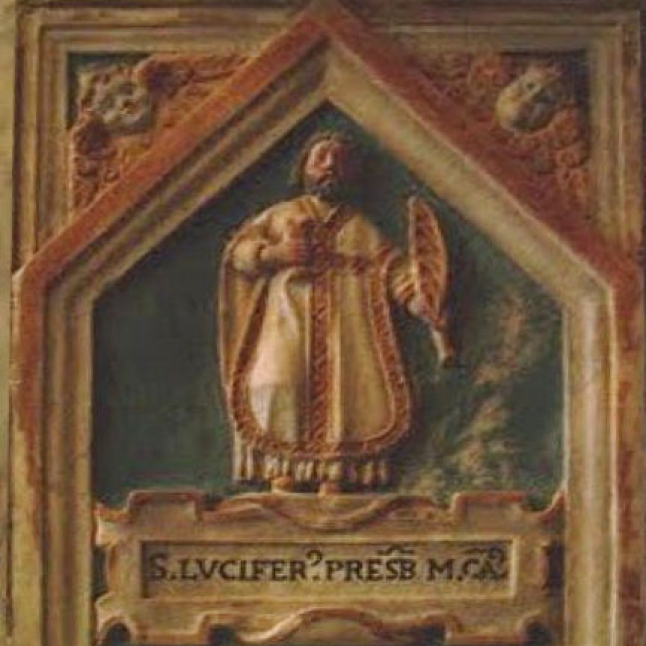
01 March 2016 Saint Lucifero of Cagliari
Lucifero was the Bishop of Cagliari and was celebrated by Catholic Church for his absolute devotion to the original dogma of the divine nature of Jesus Christ.
During 321 A.D. was spread the Trinitarian Doctrine, elaborated by the Presbyter Ario, according to which was denied the consubstantiality, in a supposed subordination of the Son to the Father, that, originated, was the only one who had the divine nature.
So, Arianism did not deny Trinity, but the divine nature of the Son given that he was engendered by the Father, composing of three different figures.
The Council of Nicea (325 A.D.) represented the Catholic turning point, declaring the Nicene Symbol, called Nicene Creed too, in which is definitely attributed to Christ the homooùsios (the same essence), the dogmatic basis of Christianity.
In other words, the Council declared the same nature of the Father and of the Son, excluding the Arian subordinationism and excommunicated the Monk Ario. By now banned, he was led in Illiria.

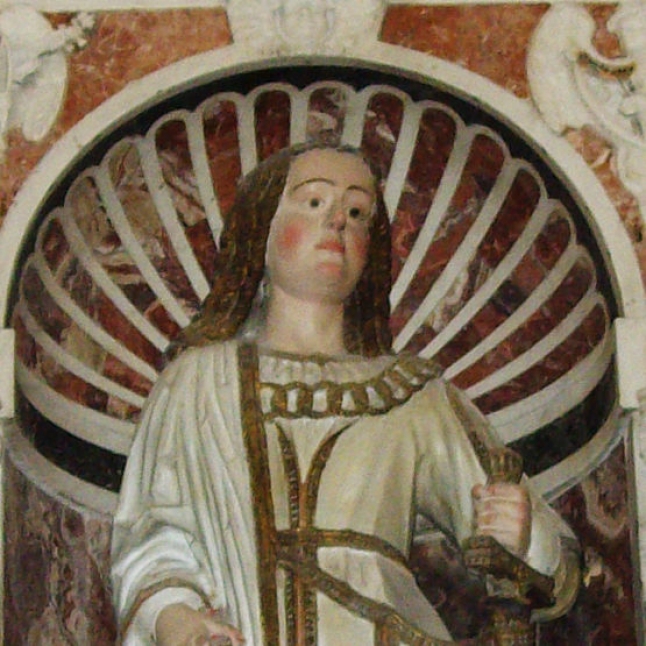
01 March 2016 Saint Saturnino
The martyr Saturnino (285-304) was born in Cagliari and lived as a civis according to the Catholic creed for the family educational choice.
The courage and the character maturity characterized the Saint’s personality.
In spite of his young age, he was allowed to oppose himself to the pagan idolatry, to which he did not surrender not even under the Diocleziano’s domain and Massimiliano’s.
During the aforementioned epoch, the agreement to trade was subordinated to the sacrifice towards Jupiter and to the pagan Gods; who refused to make the activity ordered, would be imprisoned and decapitated after the torture.

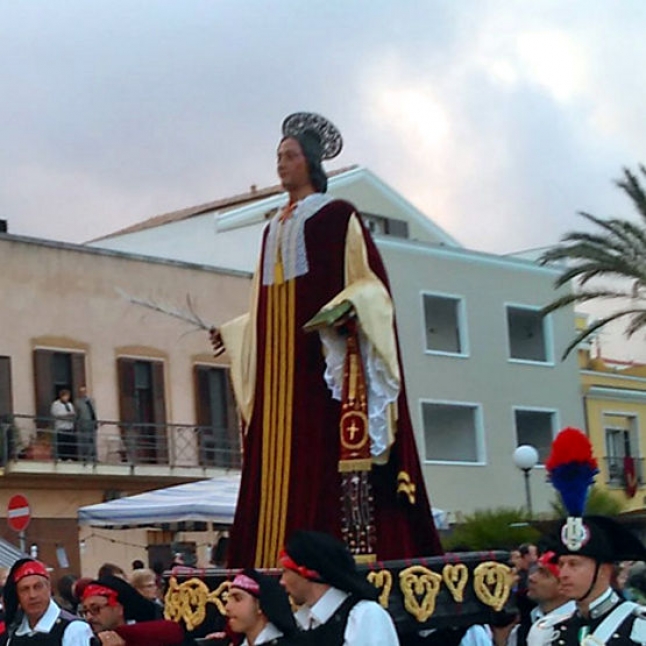
01 March 2016 Saint Antioco, a doctor and a martyr
It is an absolute truth that according to which who has faith is able to pass through the infinite and to surmount the unknown.
Trusting means having hope and a total certainty that whatever problem can be solved. Keeping solid own ideas means having the bravery of facing whatever situation. Antioco, become Sant’Antioco, could prove exactly that.
Antioco, a doctor who lived during the Empire of Adriano, did not choose to challenge the fate, but he wanted to carry on his certainties connected with Christianity.
His religious creed was so strong, that he was obligated to be subjected to hard punishments, but that did not represent any pain for him, because the principles that connected him to faith allowed him to win several tests.

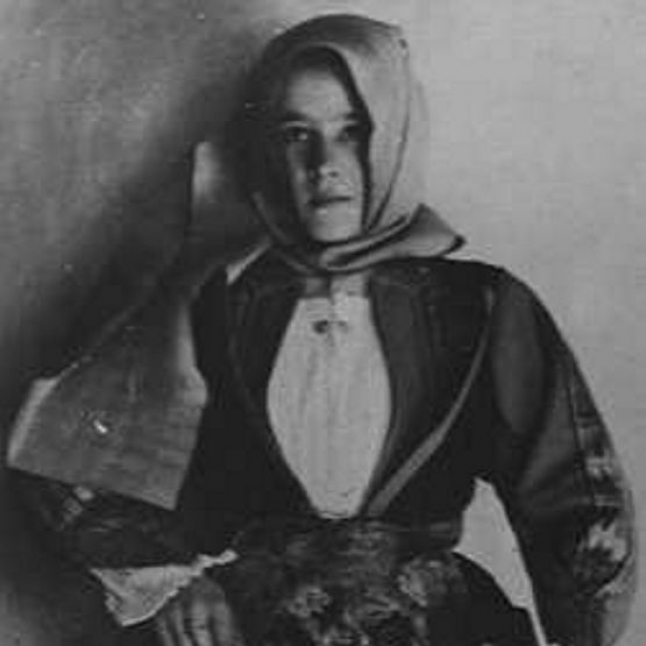
01 March 2016 Blessed Antonia Mesina
Antonia Mesina was young and beautiful when she met her murderer.
Thinking about her, the daughter of an unruly and harsh land like the interior area of Sardinia, looks like the flowers that give a color to the dry stone walls, covered with climbers, or to the bushes of flowery plumbago, compared to different blood of bougainvillea.
But are purple, white and yellow colors of a climbing passion flower, the passion flower with a perfect and complex shape, that seem to resemble mainly and better to the spiritual fate of the Beatified Person of Orgosolo.
From these hues and these symbols takes life the suggestive human figure of Antonia Mesina, who draws strength and emotional intensity from the abundant nature of the countries around Orgosolo from which, as a very young victim, could take the most beautiful and the best. Limpid and clear like the sky, then she could bring back dignity to a bare and ungrateful land.
A model of humility, she obstructed the aggression of a wild land going against her torturer with bravery and will, until her sacrifice. This energy of spirit is current in the present life, an example not to be overpowered by the unfair, malevolent, easy and superficial things.

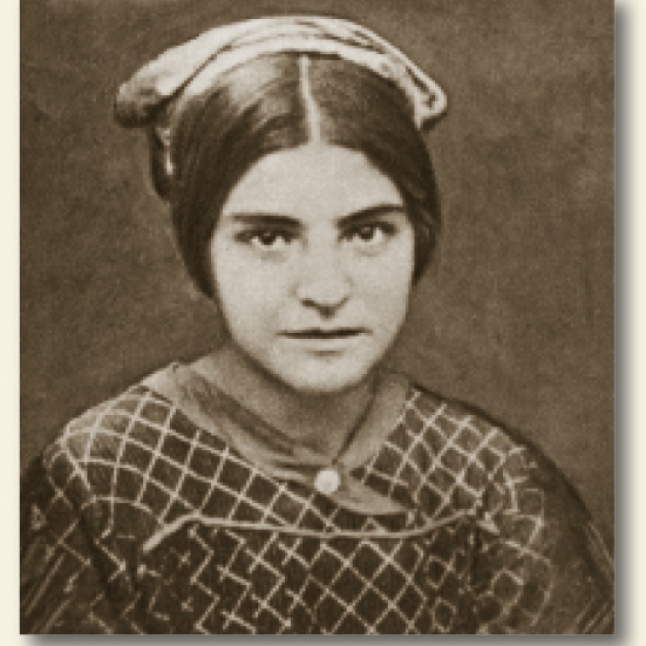
01 March 2016 Beatified Maria Gabriella of Unity
Dorgali is one of the most extended Sardinian areas of the Island. Its territory stands out between a limpid and crystal sea of an unequalled pale blue, that makes the Gulf of Orosei one of the most beautiful places in the world.
It is here that Maria Sagheddu, then called Maù by the other nuns, was born on 17th March 1914 in a copious family of shepherds.
She early became orphan, she had to work for helping her family. Her interest for the Catholic Action was sudden and late: he was eighteen years old when she signed up in it.
She became meditative, discreet, smart, austere and resolute. Increased for her the spirit of prayer and meditation, highlighting her qualities of politeness, generosity and kindness towards other people.
The vice priest, Father Basilio Meloni, foreseeing her inclination to the religious dedication, supported her in a careful spiritual way advising her the Trappist as an order more similar to her sensitivity. Maria accepted with a lot of joy.

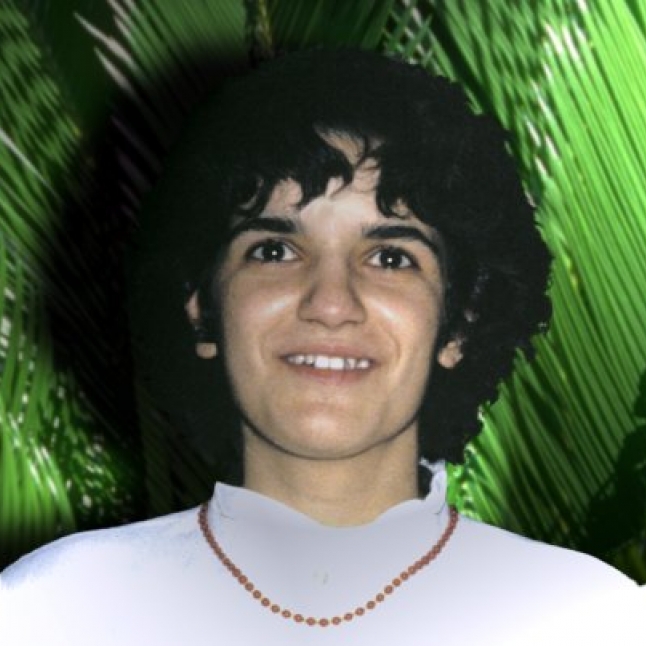
01 March 2016 Simona Tronci, a servant of God
Knowing Simona in addition to the hearsay and to the official texts. Who was Simona for the people who knew her?
About Simona I remember a friendship, evident and intense at the same time. It was impossible not to have something in common or in close sharing with her. I knew her for a coincidence, during a meeting of prayer to which I did not take part; but during the spiritual walk, nothing happens for a coincidence... On the contrary, was told me frankly by her, exactly in that occasion. I was looking for an answer, I was looking for a sense. And then I heard her singing and I told myself: “That girl sings through her heart and I feel her intensely”.
Being woman in Sardinia. What meaning does womanliness have today beyond the appearances?
Twenty-year-old, she was a girl next door, soap and water, operative, interested to political, economic and social problems. She participated intensely in the Catholic education and she respected the rules. Her attitudes were never prevaricator; she loved staying in the company and, like all the young girls of that age, she shared gladly the moments of leisure. She liked music a lot.
Friendships and engagements?
Simona would have wanted to get married. She desired to have some children in the future, to have a great family and finding a decent job after her studies, putting together her constant help to her loved Church. Were many her projects: studies, hopes, her activities for the social sphere and the great care for creating a family with her boyfriend Sergio... Everything tragically interrupted at birth. For Simona love was an immense gift to be given without reserves and without waiting for anything in exchange. According to her, love was who was able to wait and to make miracles without making noise.

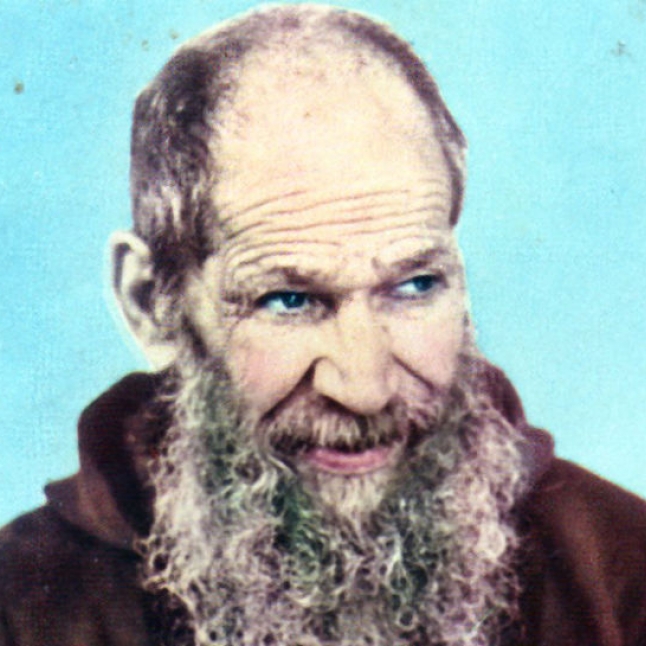
01 March 2016 Beatified Nicola from Gesturi
Giovanni Angelo Salvatore Medda was born in Gesturi on 5th August 1882 into a family of humble farmers of Oristano, with an intense humanitarian and Catholic inclination.
When he was thirteen years old, orphan of mother as well, he began his working life as a servant at a rich landowner of the village.
After the death of this person, he carried on the same activity as a servant at his sister’s brother-in-law, not for necessity conditions, but because of a personal choice.
The event that persuaded his religious life was connected to his health condition: indeed, he was damaged by a joint rheumatism, that forced him to stay in bed for almost two months, during which he took the vow of fasting on Saturdays of each week and that continued for his whole life.
